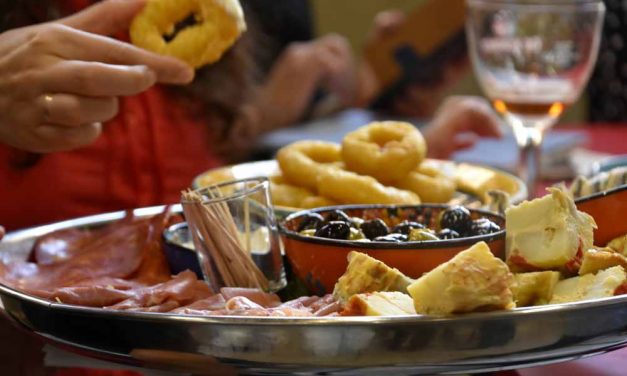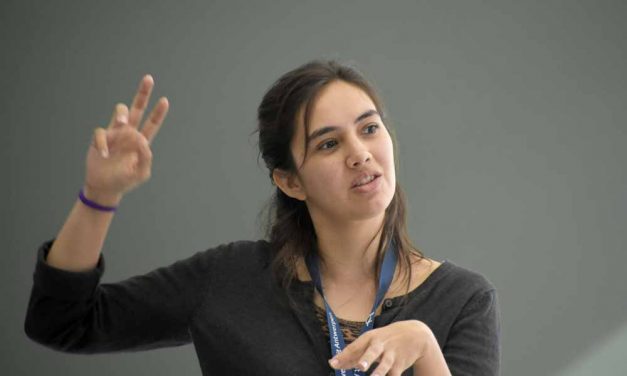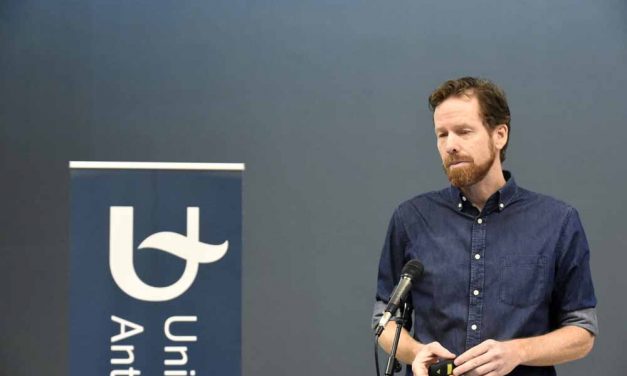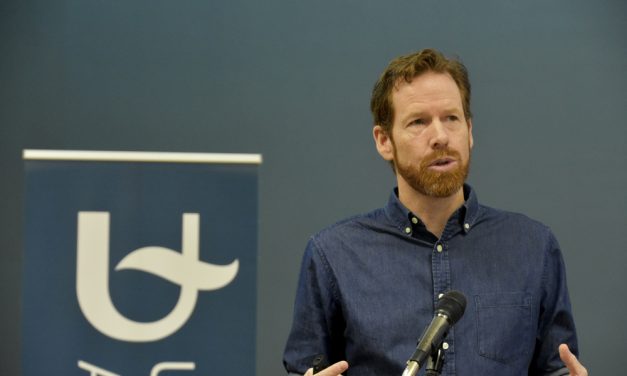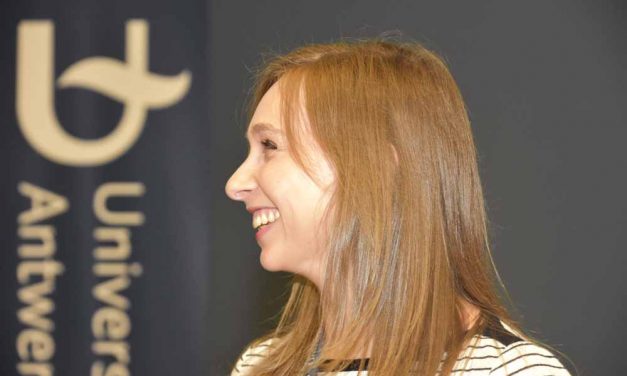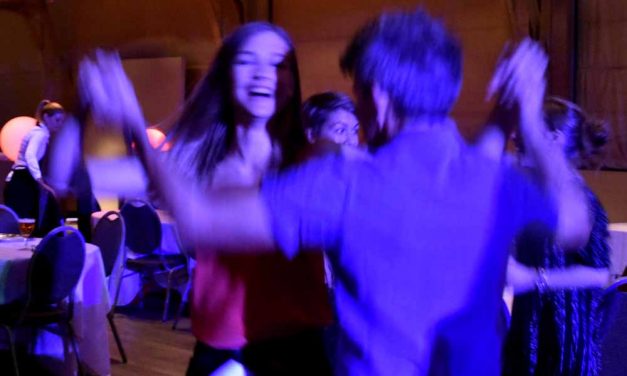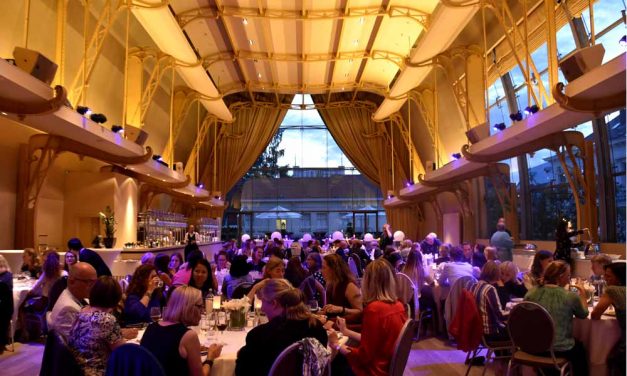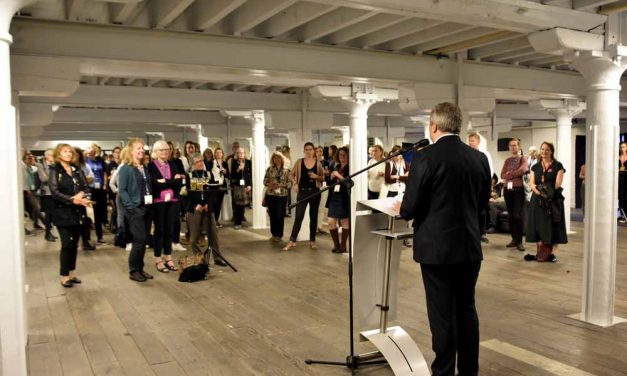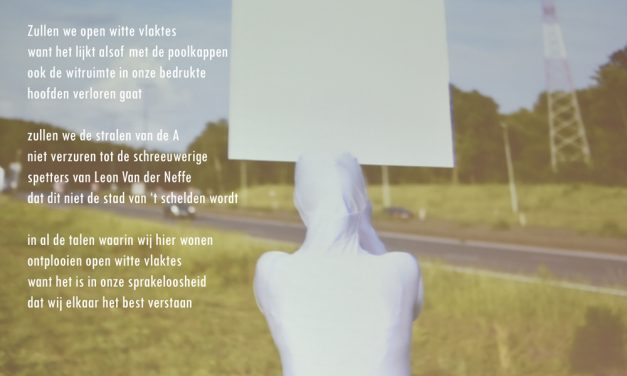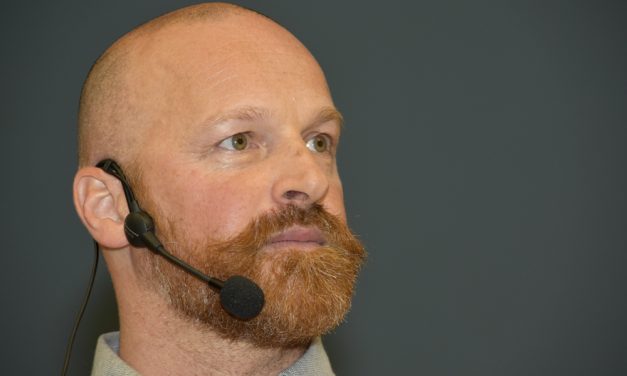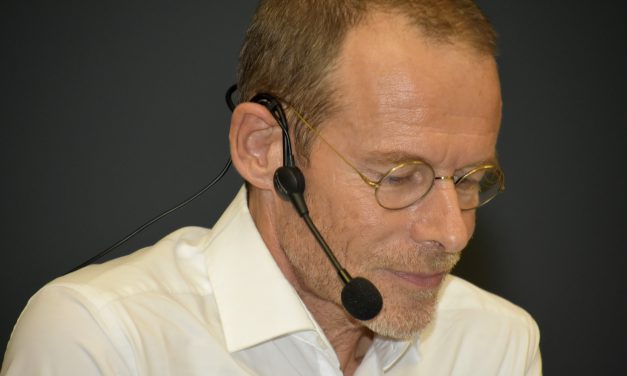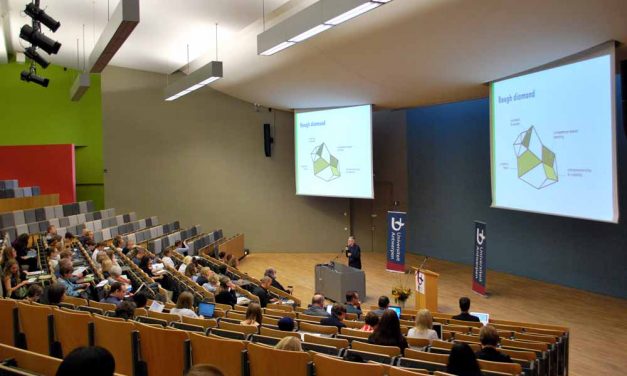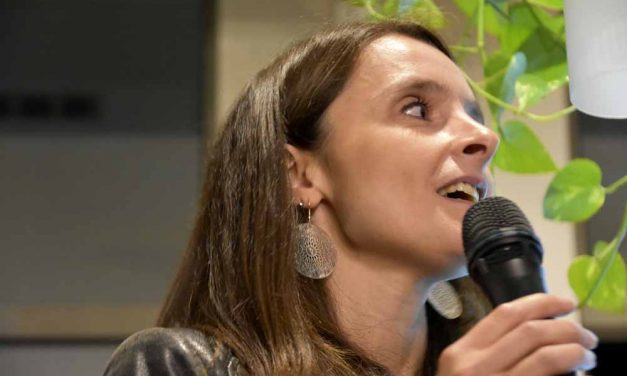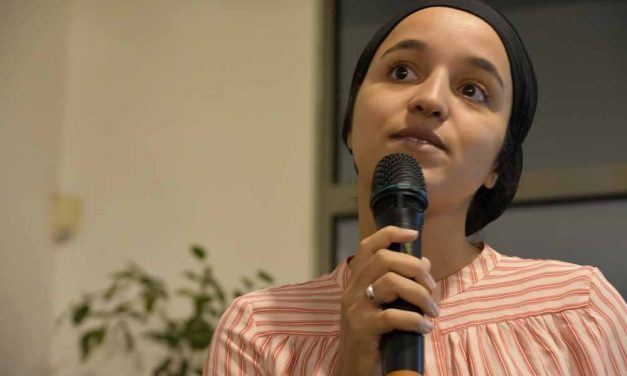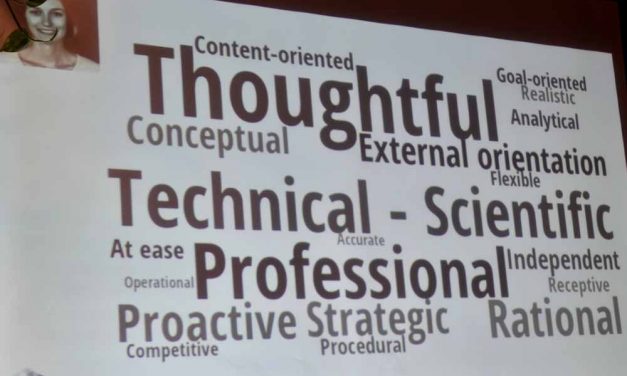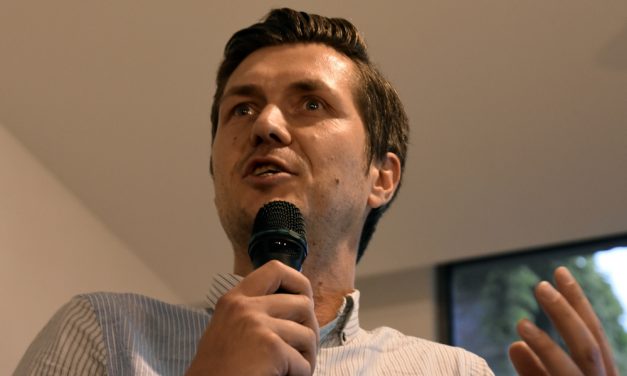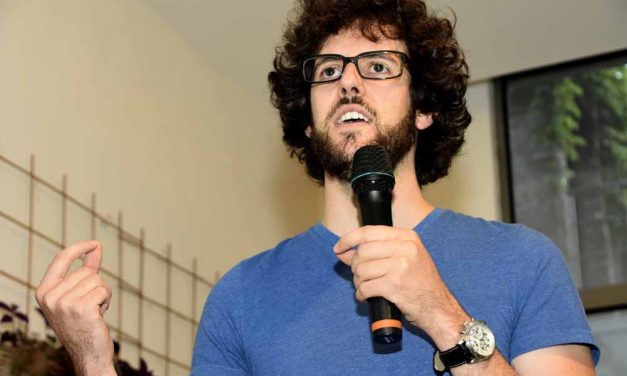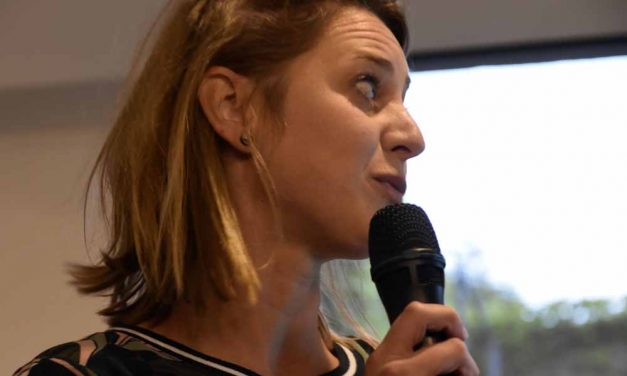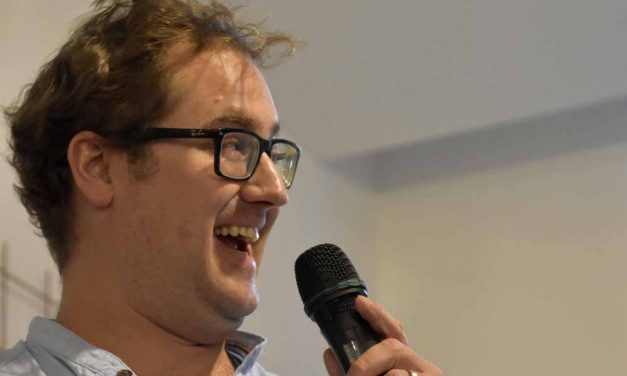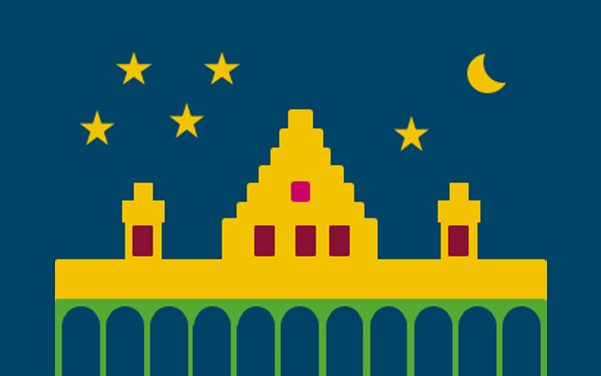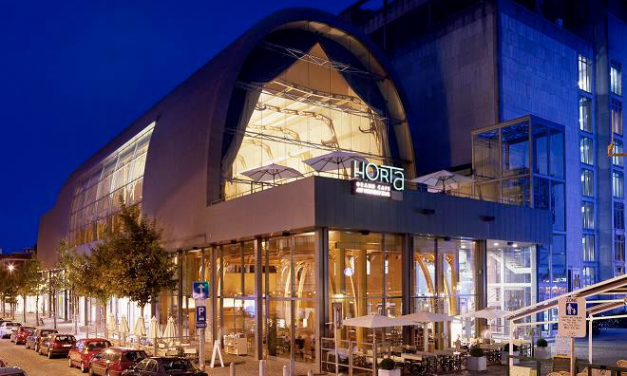Exploring and predicting creativity using natural language processing tools
In the second academic keynote speech, Scott Crossley sets out to examine creativity in writing by using automatic linguistic analysis tools. He approaches creativity from two different perspectives, namely cognitive creativity, which he characterizes as the ability to develop original and effective solutions to a problem and linguistic creativity, which entails playing with form or meaning in language. Cognitive creativity can be studied by considering the fluency, flexibility, originality and elaboration of ideas, while linguistic creativity is mostly focused on three different types of figurative language: metaphor and simile, irony, satire and sarcasm and wordplay.
Creativity and fluency in writing
In this first academic keynote address, Evgeny Chukharev-Hudilainen explores the relation between creativity and fluency in writing. He discusses how the psycholinguistics of text production can contribute to an understanding of how creativity in writing can positively be influenced.
Stop being creative (and start creating)
“Does anyone have any ideas?” We’ve all been there. Everyone round the table, thinking faces on, waiting for that something called … creativity. However, as creative thinker Karl Raats points out, “Does anyone have any ideas” may just be the most idea-killing question to open any meeting, which often turns into a game of “guess what the boss is thinking”.
When language struggles become poetry
Maud Vanhauwaert may be renowned for being an award-winning poet, but she describes herself—rather prosaically—as someone who is ‘professionally struggling with language’. Her struggle got rather official at the beginning of this year, when she became Antwerp’s City Poet Laureate. Using the city as her laboratory, she is on a quest to take poetry beyond the boundaries of paper.
Tinkering leads to better thinking
When faced with complex problems, people often try to solve them by doing what they did before. They rush towards easy or obvious solutions, preferably as soon as possible. However, complexity must be tackled with complexity, creative leader Joannes Vandermeulen states at Sig Writing 2018.
Story Table: virtual digital comfort zones for hospitals
A hospital is not the most cosy place for children to be in. Visual artist Ludivine Lechat and computer linguist Tom De Smedt developed Story Table, which aims to create interactive fairytales for hospitalized children to reduce stress and loneliness.
The joy and burden of multilingualism
“Multilingualism was a burden”, muslim master student and opinion maker Yasmien Naciri testified. She constantly felt trapped on a bridge trying to connect different worlds. In high school she preferred reading over writing, because in reading there was no interaction needed. But then she took part in a poetry contest and discovered the joy of writing.
We are what and how we write
The way you write reveals a lot about who you are. Your age, your gender and even your personality are encoded in your personal writing style. With Textgain, Guy De Pauw developed a technology that automatically extracts demographic features from your writing, using powerful machine learning techniques.
Improv theatre & public speaking stress
People fear public speaking more than death, according to Jordi Casteleyn ánd a lot of scientific surveys 😉 It is a fact that many presenters experience public speaking stress, which has a direct impact on the quality of their talk. Why not battle it with improvisational theatre?
Alexandria.works: a new way of exploring information
Often people do not know how to begin searching for information. You try any combination of keywords but just can’t find what you are looking for. Or what if you have a huge pile of counsel reports, press articles, advisory reports… and you have to look through them in a short period of time to find the information you need?
The opportunities of digital assessment platform D-PAC
At a certain point in time, every writing researcher needs to assess the quality of writing. But doing this in a reliable and valid way is often a challenge. Maarten Goossens and Renske Bouwer presented D-PAC, a challenging new tool to assess competencies such as writing.
Can computers produce qualitative hip-hop?
Can machines write their own books? Writing literature has always been a human skill. But now there’s AsiBot, the literary robot of the University of Antwerp and het Meertens Instituut. AsiBot is able to write synthetic literature. It has written a story with the Dutch best-selling author Ronald Giphart.
Signite sessions: what to expect?
On the evening before the official start of the conference, we hope to inspire you with Ignite-style short presentations on the exciting topic of “Language and creativity”. Various speakers will share their passion in 5-minute presentations. The SIGnite sessions are a wonderful occasion to start off the conference in a relaxing way and to meet your colleagues in an informal setting @ Cuperus Coffee.
Conference dinner | The location
For the conference diner, we take you to the “Grand Café Horta”, situated in the fashionable heart of Antwerp. The Art nouveau room where we will dine and dance gets its grandeur from the iron trusses of the former Volkshuis in Brussels, built by the famous Belgian architect Victor Horta.
Opening event | The location
The opening event will take place in the Felixpakhuis, one of the most striking examples of warehouses from the 19th century. In 1860 it was built as a warehouse for bulk goods such as coffee, grain, cheese and tobacco. The unique inner street, which connects the Antwerp city center with the trendy district ‘t Eilandje was built after a devastating fire in 1862 as a firebreak during the reconstruction of the warehouse.

Blog team
Blog
Caroline Dothee
Katrien Verreyken
Mike Beyers
Photography
Mariëlle Leijten
Nina Vandermeulen
Suzy Stals
Web design
Suzy Stals

